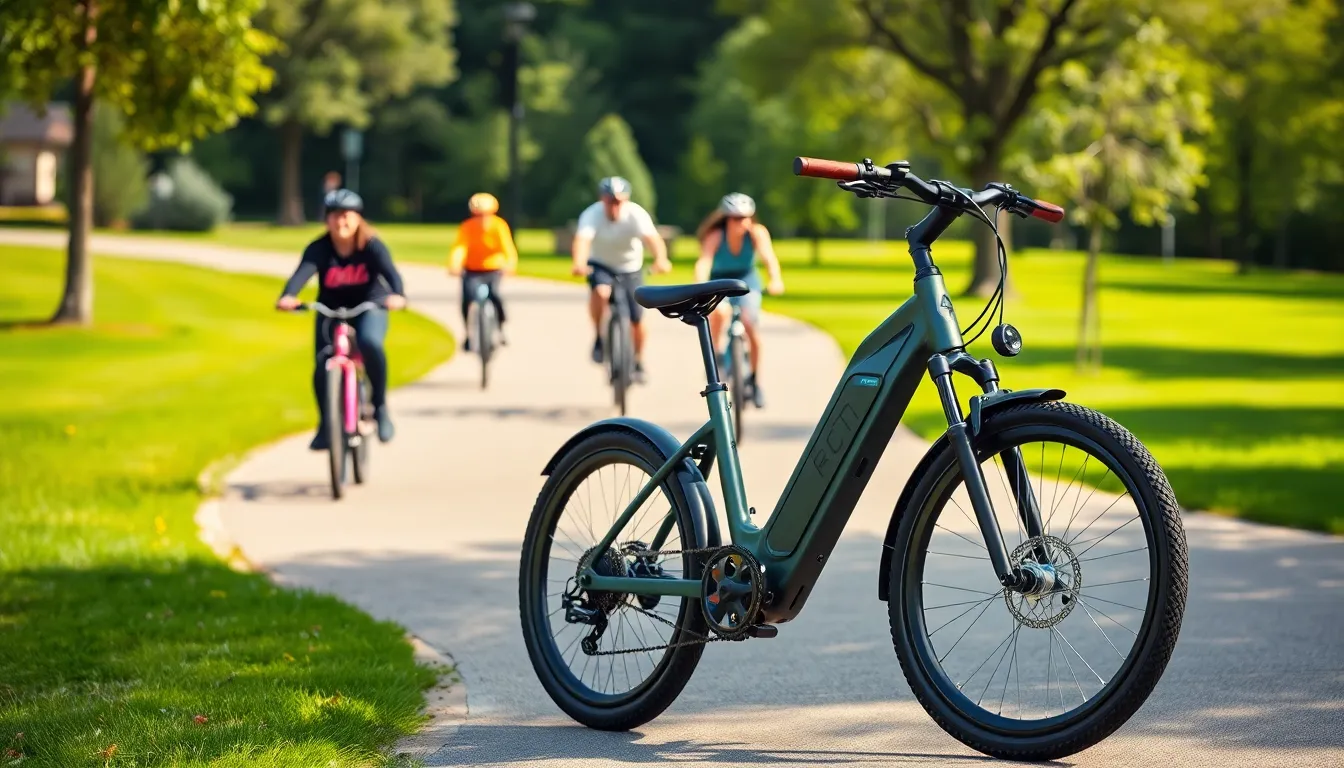If you’ve ever cruised down a bike lane on an electric bike, you might have wondered: Are these zippy two-wheelers actually considered motorized vehicles? It’s a fair question. After all, they whizz past traditional bicycles like they’re late for a dinner date. With the rise of e-bikes, navigating the rules and regulations can feel trickier than riding uphill in a thunderstorm. So, buckle up your helmet as we investigate into the intriguing realm of electric bikes and their legal status.
Table of Contents
ToggleUnderstanding Electric Bikes

Electric bikes, or e-bikes, are simply bicycles equipped with a battery and a motor that helps propel the rider forward. They come in various shapes and sizes, and their technology varies as much as the riders who use them. Think of them as bicycles with a little extra umph, allowing riders to tackle tough terrains or long distances without breaking a sweat. E-bikes bridge the gap between traditional cycling and motorized transportation, giving riders the feeling of freedom without the fuss of a gas engine. Plus, they’re a fantastic way to reduce carbon emissions, until someone tries to race you on that shiny new road bike.
Definition of Motorized Vehicles
The term ‘motorized vehicles’ typically refers to any vehicle that is powered by an engine or motor. This includes cars, trucks, motorcycles, and even scooters. The key here lies in the power source. Most states and localities have specific definitions of what constitutes a motorized vehicle, often using legal language that could make a grown person weep. Generally, if it runs on gasoline or has a significant motor assist, it qualifies. You might think, “Well, what about electric scooters or hoverboards?” They too fall under this umbrella, but electric bikes might be a gray area.
Legal Classifications of Electric Bikes
Types of Electric Bikes
The legal classification of electric bikes can vary widely by location, but they generally fall into three categories: Class 1, Class 2, and Class 3. Class 1 e-bikes provide pedal assistance only when the rider is pedaling. Class 2 e-bikes can be controlled with a throttle and don’t require pedaling, but hold your horses. They usually have a speed limit to keep things safe. Finally, Class 3 e-bikes can hit higher speeds and often require the rider to wear a helmet.
Pedal-Assist vs. Throttle-Controlled
Pedal-assist bikes enrich the riding experience by giving a gentle push in the right direction when a cyclist is pedaling. On the other hand, throttle-controlled e-bikes let riders zip off without ever getting their legs moving. This difference can influence how they’re categorized in local laws, leading to some confusion. Who knew that which tiny button you press could change everything?
Local and State Regulations
Local and state regulations play a significant role in determining whether an electric bike is considered a motorized vehicle. Some areas treat all e-bikes as bicycles, while others enforce stricter motor vehicle laws. It’s essential for riders to familiarize themselves with local bylaws, as they may dictate helmet laws, maximum speeds, and even where e-bikes can ride. This patchwork of legislation sometimes creates unwelcome surprises for riders, like fines or restrictions that feel as unjust as a flat tire.
Safety and Insurance Considerations
With increased speed comes increased responsibility. When it comes to safety, electric bikes should not be taken lightly. Riders must consider wearing helmets, especially on Class 3 e-bikes, which can reach higher speeds. Insurance can be murky, too. Some riders may wonder if they need special insurance for their e-bikes. In many cases, standard bicycle insurance may suffice, but others might need more coverage based on the bike’s classification and local requirements. Either way, it’s worth doing your assignments to avoid any gut-wrenching surprises.
Benefits of Electric Bike Use
Electric bikes come with a plethora of benefits. They not only promote physical health by encouraging cycling but also provide an eco-friendly mode of transportation. Studies suggest e-bikes may help reduce carbon footprints, particularly in urban areas where traffic congestion reigns supreme. Plus, they often lead to less wear and tear on public transit systems. Commuters find they can arrive at their destination faster, without the sweaty aftermath of a traditional bike ride. And let’s face it, who doesn’t want to feel like a superhero gliding through traffic?






